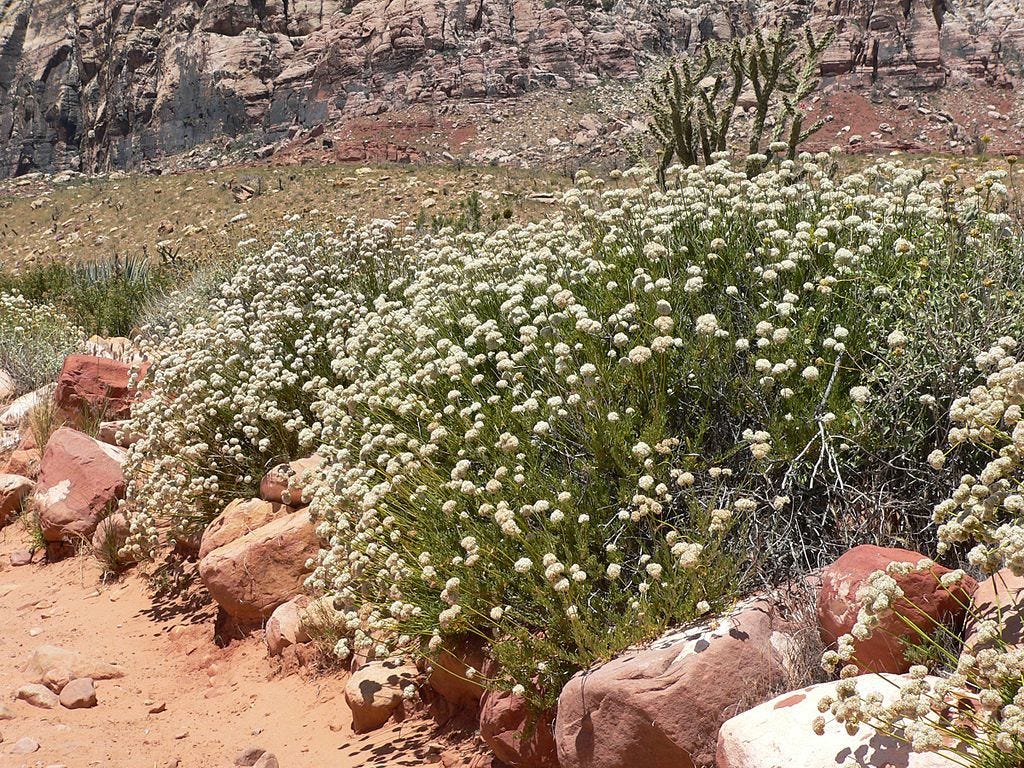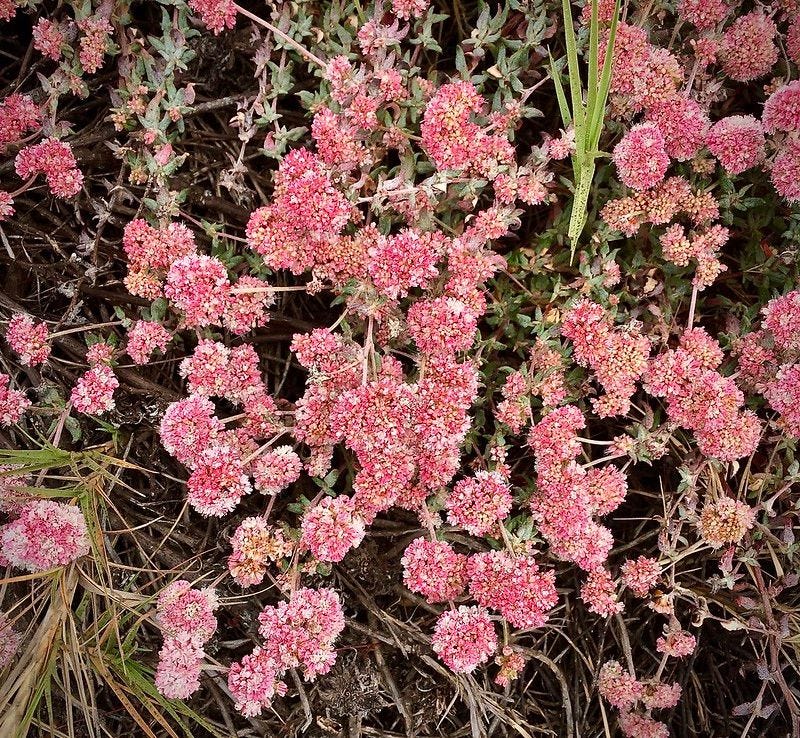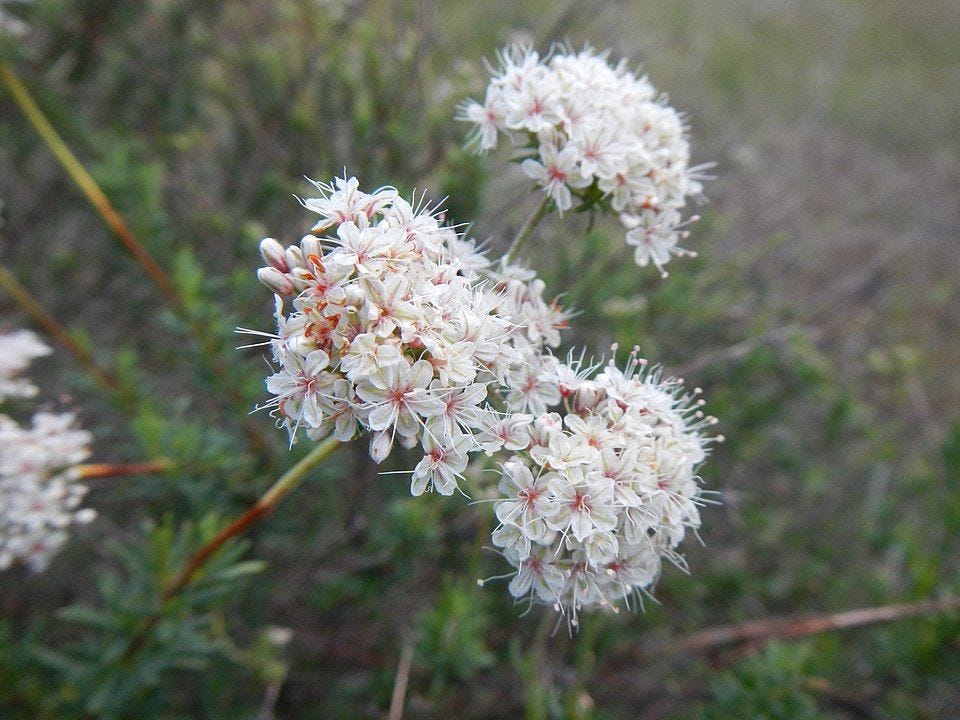California Buckwheat
This tough California native is a shrub for all seasons.
It's January, which is a great time to plant a California Native Garden. All month, we are publishing plant profiles of select native plants.
Today we are featuring California Buckwheat (Erigonum fasciculatum), which is a very useful plant for a California Native, SouthWestern Desert or Mediterranean garden. CA Buckwheat has tough flowers that persist through the hot summer months, adding some flair to an otherwise dormant landscape in the Coastal Sage Scrub, Chaparral and Desert regions of California and the American South West. This resilient shrub can survive in cool coastal, warm inland as well as hot desert regions without breaking a sweat.

Appearance
California Buckwheat has very small leaves, that are green and needle-like in shape. The leaves are similar to Rosemary, but are more spaced out on the stems than Rosemary foliage.
The flowers are the real show-stopper here. Flowers grow in umbels (clumps) on stalks at the end of the woody stems, and emerge in Spring. From a distance, each umbel looks like an individual flower, when in fact it is made up of many flowers measuring only a few millimeters. Starting off pink, the flowers fade to white over summer, and slowly fade to cinnamon by late Autumn.
The flowers attract butterflies making it a great choice of shrub for a wildlife garden. Buckwheat is also the most important source of honey for native bees in California.
Generally low growing, Buckwheat forms a low mound, rarely exceeding 4 feet in height. These shrubs are best planted in the middle ground or the edge of a border - try to keep the plant within easy access for maintenance. The flowerheads will turn into seed heads but will often need deadheading to remove them during Winter for best appearance. When removing the dried flowers, as these are now seed heads, they can be crumbled for direct seeding into the ground. Without deadheading, you could be stuck with the dried flowers into the next season, so these are best planted where they can be reached by hand.
Growing Buckwheat
Buckwheat is a tough plant and thrives in nutrient-poor soils. The only real need is sun: it prefers a full sun location. A very drought tolerant plant, it requires no additional irrigation after it is established during the first year in the ground. Buckwheat has a strong root system, and can root from branches that touch the ground. This is an excellent choice for a slope as it does a good job in controlling soil erosion.
Virtually free of pests and diseases, the only issue with Buckwheat is root rot. If the roots stay damp during hot summer days, rot can set in and kill the plant. As an evergreen plant, it does not dry out or go dormant and stays green during normal drought periods.
In nature, it is a pioneer plant that grows in dry inhospitable soils and is one of the first new plants to fill in space after a wildfire. This pioneering nature makes it very suitable for the types of poor soils found around new construction homes.

Cultivars
There are several cultivars available in nurseries, with a few prostrate forms that can be used as low groundcovers, or trailed over a wall. "Bruce Dickinson", "Wild Cascade" and "Theodore Payne" cultivars all grow less than 1ft (0.3m) high. The appearance of buckwheat growing over a wall is very similar to a trailing rosemary. Buckwheat takes pruning well, which makes it easier to keep under control when grown like this.
Hardiness
Eriogonum fasciculatum is hardy to USDA zones 7-11, Sunset Zones 7-9, 12-24.





